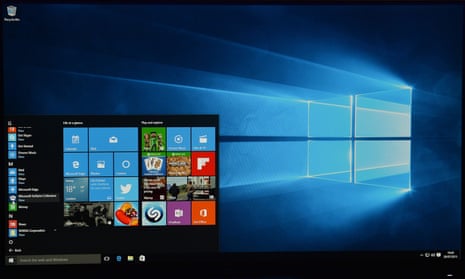Microsoft’s efforts to entice users to upgrade to Windows 10 will soon see it automatically downloaded on to users computers without their knowledge.
The company announced that Windows 10 will become a “recommended update” starting next year, which means anyone with Windows 7 or 8 that has automatic updates activated – the default and the best way to keep a computer protected against security bugs – will have Windows 10 automatically downloaded without asking.
What’s more, the installer for Windows 10 will start once it has been downloading, presenting users with a popup. Users will be able to decline the update, once the installer has started, or prevent the update from being downloaded by manually blocking it in Windows update.
But the propensity of users to simply hit “OK” or accept when faced with a prompt in the middle of doing something else, will likely see users just blindly hit OK and unknowingly installing Windows 10, preventing access to the computer while the instalment completes.
Terry Myerson, executive vice president of Microsoft’s Windows and Devices group said: “If you choose to upgrade (our recommendation!), then you will have 31 days to roll back to your previous Windows version if you don’t love it.”
Windows 10 automatically downloads on to the computers of those running Windows 7 or 8 who have registered interest in the new version of Windows.
Optional first, recommended later
Windows 10 will imminently be upgraded to an “optional” update, which could also see it downloaded automatically if a user has manually set Windows update to automatically install optional updates as well as recommended updates.
While Windows 10 has seen good reviews and one of the best launches for a Windows version since Windows 98 in terms of compatibility with existing devices and software, automatic downloads may cause issues, particularly for those short of storage space or on metered internet connections.
“If you are on a metered connection on Windows 7 or Windows 8.1, then you have the option of turning off automatic updates. We strongly discourage this in today’s connected world because of the constant risk of internet threats,” said Myerson.
The automatic Windows 10 download has been shown to take up between 3.5GB and 6GB on a user’s computer. Some metered connections provide as little as 40GB of data allowance a month. Some Windows 8 computers have as little as 32GB of storage space.
Should the user decline the installation of Windows 10 after it has been downloaded the update will not be automatically deleted, meaning it will sit on a user’s computer taking up storage space.
Windows 10, which is free when upgrading, had been installed on 75m computers by the end of August, accounting for 4.9% of desktop internet users according to data from web analytics firm StatCounter. Windows 7 still held a 48.1% share of global internet users.

Comments (…)
Sign in or create your Guardian account to join the discussion